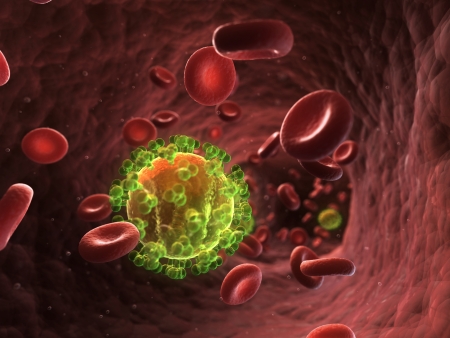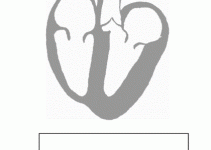Strømme Syndrome is the name of an extremely atypical genetic condition that is characterized by congenital anomalies or abnormalities in one’s eyes, skull, and intestines. The abnormalities vary from one affected individual to the other, and issues associated with heart or kidneys are also present at times. The condition develops from a mutated CENPF gene, and it is passed to the offspring in a particular fashion known as autosomal recessive, meaning that in order to be affected, at least one copy of the mutated gene should be received by the offspring from each parent.
Other Names of Strømme Syndrome
- Apple peel syndrome
- Apple peel anomalies
- CILD31
- Ciliary dyskinesia
- Jejunal atresia
Ocular anomalies (including varying degrees of)
- Angular dysgenesis
- Corneal leukemia
- Hypoplasia
- Micro cornea
- Cataracts
- Anterior synechiae
- Sclera cornea
- Iris colobomas
The clinical characteristics of this disease are illustrated below in short.
Ocular features
In Strømme syndrome, the core complex incorporates intestinal atresia as well as ocular abnormalities related to the anterior segment. The ocular anomalies involve varying degrees of angle dysgenesis, corneal leukoma, anterior synechiae, iris hypoplasia and colobomas, sclera cornea, cataracts, and micro cornea. Also, microphthalmia, optic nerve hypoplasia, and tortuous retinal vessels may be present. Deep-set eyes and hypertelorism have been reported. No cases of glaucoma have been described. Most of the patients have been pretty young for RAT or reliable acuity testing.
Systemic features
The phenotype is pretty variable. It is observed that the ears are low-set and large most of the time. Microcephaly is present most of the time accompanied by micrognathia and a cleft palate. The intestinal atresia appears involving the jejunum mainly and is typically surgically correctable. Intestinal malrotation has also been noted, and the duodenum may too be involved. Myopathic changes are found in the myocardium along with a small amount of cardiomyocytes. Microcephaly is apparently seen to be progressive. Renal hydronephrosis and hypodysplasia have been stated. Short stature has also been described, and when it comes to the development of affected individuals, the amount of delay is found to be highly variable.
Causes of Strømme Syndrome
Strømme syndrome is a rare hereditary disease caused by a mutation in the Centromere protein F at chromosome 1q41 (CENPF 1q41) gene. This mutation happens in both the persons involved in sexual congress, and as a consequence, it is transferred to the offspring/s. To put things into perspective, one out of four babies will inherit this syndrome, provided each parent has one single mutation. Mutation in this ARD means a complete alteration of the particular gene, and it is the one and only cause of Strømme syndrome.
Symptoms
- Low set ears
- Hypertelorism
- Ear malformation
- Congenital eye anomaly
- Hypoplastic mandible condyle
- Microcephaly
- Abnormality in the skeleton system
- Abnormality in the respiratory system
- Abnormality of the nervous system
- Abnormality of the digestive system
- Ciliary dyskinesia
- Hydrocephalus
- Cerebellar hypoplasia
- Corpus callosum agenesis
- Duodenal atresia
- Short columella
- Hypoplasic mandible condyle
- Cleft palate
- Smaller head than usual
- Longer neck than usual
Diagnosis
The syndrome was first stated by Norwegian pediatrician Peter Strømme et al. in 1993 in biological siblings presenting with microcephaly, apple peel intestinal atresia, and ocular anomalies. The etiology is unknown to date. Strømme syndrome is an ARD caused by a mutated CENPF leading to a wide gamut of phenotypic spectrum. Family-based WES or whole-exome sequencing is employed case-to-case basis to identify the truncating genetic mutations in CENPF, i.e., the centrosome gene.
Differential diagnosis
As there are only a dozen cases of Strømme syndrome in the entire world, the question of performing a differential diagnosis does not arise here.
Treatments
Strømme syndrome cannot be treated because it is an RCD or recessive congenital disorder that happens due to mutated genes. Nonetheless; the associated conditions; such as intestinal abnormalities, head abnormalities, and visual impairment can be managed with medication. Intestinal surgery is sometimes done if the patient is a child.
Medications
Medications that are used for treating this disease include hormone therapy with letrozole, estrogens, dopamine, memantine, etc. Hormonal antagonists are too used. Other agents include the application of analgesics, protein kinase inhibitors, steroid synthesis inhibitors, anti-microbial drugs and anti-viral medicines.
The unique case study of Ruby Ardolf is presented below in brief.
Ruby Ardolf is a lively twelve-year-old girl from Lakeville in Minnesota, who is born with Strømme syndrome.
Ruby’s beginnings were pretty rough, who happened to be an unplanned pregnancy. Her father did not second his spouse Angie’s decision not to terminate the pregnancy medically. Also, Angie’s first ultrasound did trouble the technician, and every new ultrasound translated to the more bad news. Among a multitude of predictions and diagnoses made by the doctors, they announced that the baby might never talk or walk.
However; much to her luck, Ruby had had a devoted fan, and she was none other than the girl’s mother. When presented with the alternative of medical termination of her pregnancy, Angie promptly declined.
Ruby is now thirteen years old and attends formal schooling just like any other regular student does. Throughout the previous twelve years, the specialists kept making several predictions about her future, and this sixth-grader proved those people all wrong. The girl started to walk at the tender age of three and began to talk when she was merely four years old.
Prevention
As Strømme syndrome is an ARD or autosomal recessive disorder, where the responsible gene mutates in both the members of the genetic pair, this disease cannot be prevented.
Prognosis
Infants typically do well after intestinal surgery. The outcomes of corneal transplants are not reported to date. The prognosis for this rare genetic disease is highly variable. Some people develop and continue to function near average, while the ones with more severity may not be alive after infancy or beyond the early childhood years.



